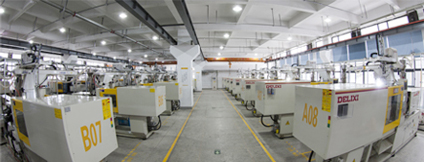Hangzhou Delixi Group Co.,Ltd.
Featured News
Welders, cutters, solderers, and brazers use hand-held or remotely controlled equipment to join or cut metal parts. They also fill holes, indentations, or seams of metal products.
Duties
Welders, cutters, solderers, and brazers typically do the following:
- Study blueprints, sketches, or specifications
- Calculate dimensions to be welded
- Inspect structures or materials to be welded
- Ignite torches or start power supplies
- Monitor the welding process to avoid overheating
- Maintain equipment and machinery
Welding is the most common way of permanently joining metal parts. In this process, heat is applied to metal pieces, melting and fusing them to form a permanent bond. Because of its strength, welding is used in shipbuilding, automobile manufacturing and repair, aerospace applications, and thousands of other manufacturing activities. Welding also is used to join steel beams in the construction of buildings, bridges, and other structures and to join pipes in pipelines, power plants, and refineries.
Welders work in a wide variety of industries, from car racing to manufacturing. The work that welders do and the equipment they use vary with the industry. Arc welding, the most common type of welding today, uses electrical currents to create heat and bond metals together—but there are more than 100 different processes that a welder can use. The type of weld normally is determined by the types of metals being joined and the conditions under which the welding is to take place.
Cutters use heat to cut and trim metal objects to specific dimensions. The work of arc, plasma, and oxy–gas cutters is closely related to that of welders. However, instead of joining metals, cutters use the heat from an electric arc, a stream of ionized gas called plasma, or burning gases to cut and trim metal objects to specific dimensions. Cutters also dismantle large objects, such as ships, railroad cars, automobiles, buildings, and aircraft. Some operate and monitor cutting machines similar to those used by welding machine operators.
Solderers and brazers also use heat to join two or more metal objects together. Soldering and brazing are similar, except that the temperature used to melt the filler metal is lower in soldering. Soldering uses metals with a melting point below 840 degrees Fahrenheit. Brazing uses metals with a higher melting point.
Soldering and brazing workers use molten metal to join two pieces of metal. However, the metal added during the soldering or brazing process has a melting point lower than that of the piece, so only the added metal is melted, not the piece. Therefore, these processes normally do not create distortions or weaknesses in the piece, as can occur with welding.
Soldering commonly is used to make electrical and electronic circuit boards, such as computer chips. Soldering workers tend to work with small pieces that must be positioned precisely.
Brazing often is used to connect cast iron and thinner metals that the higher temperatures of welding would warp. Brazing also can be used to apply coatings to parts in order to reduce wear and protect against corrosion.
This article comes from bls edit released

The IoE Ushers in Opportunity for The Last Product Recall
In our consumer-centric society, product recall announcements grab headlines and...
 86 - 571 - 85221566
86 - 571 - 85221566
 Login/Register
Login/Register

